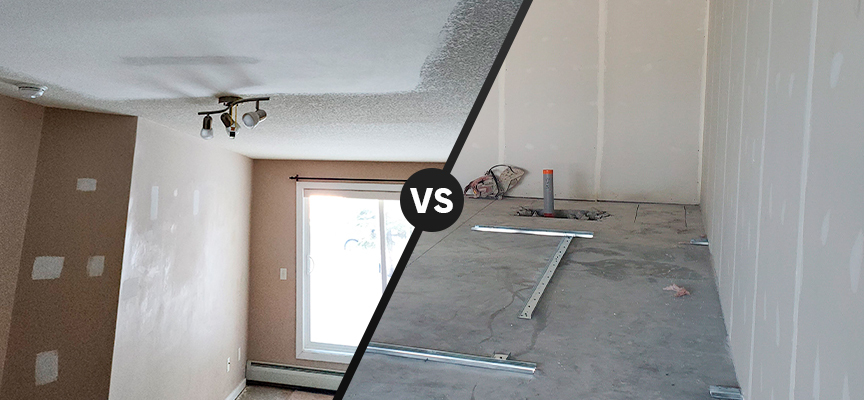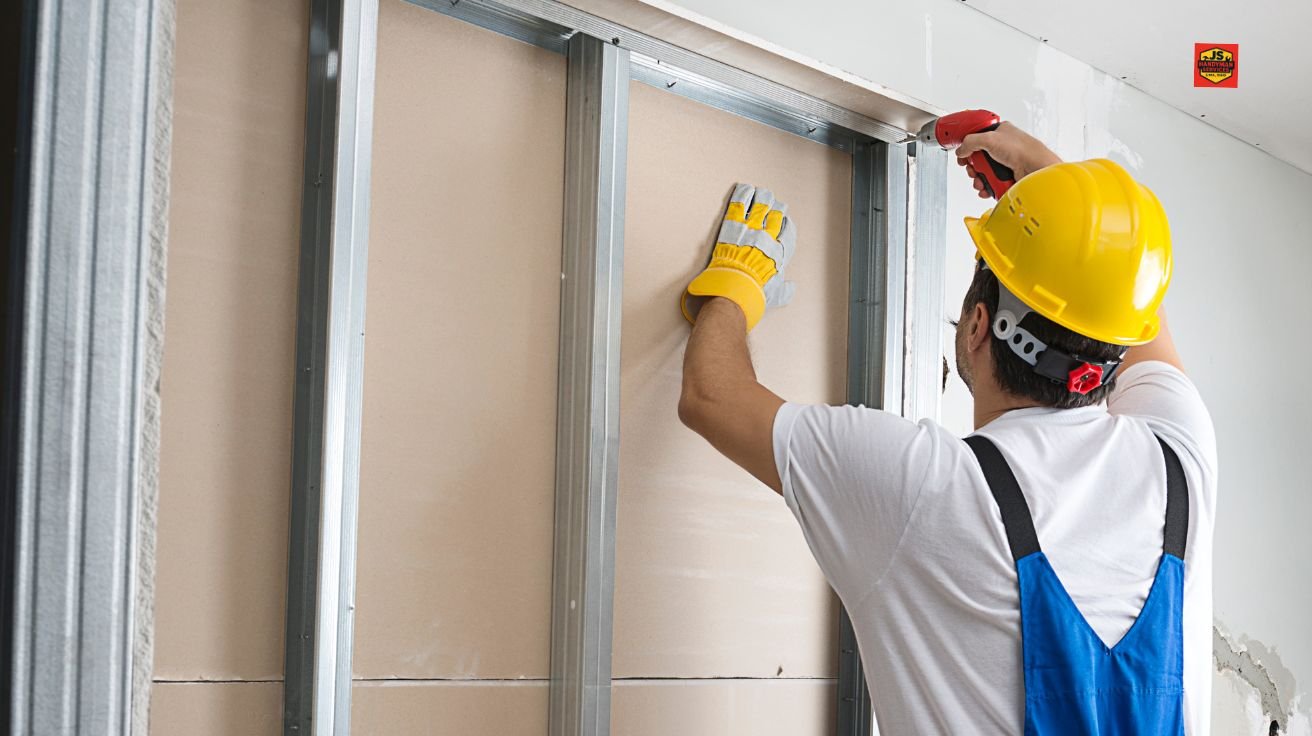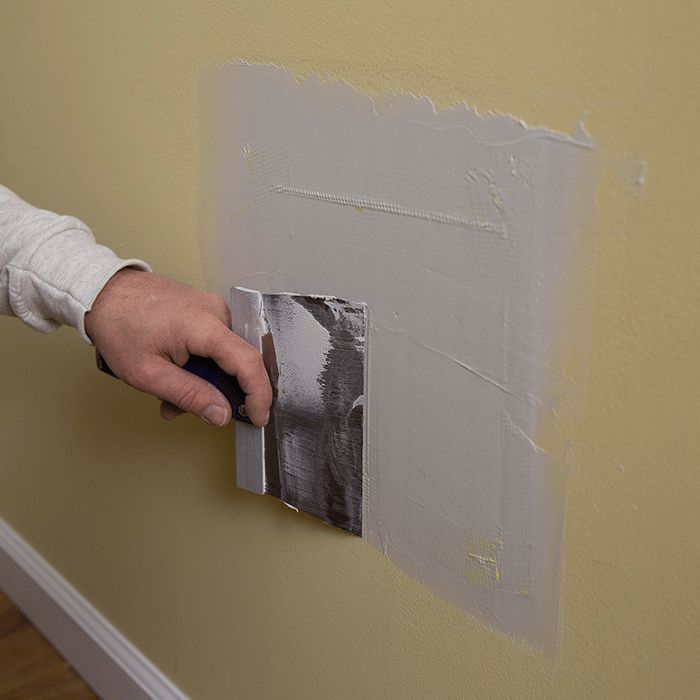A Comprehensive Overview to Mastering Drywall Repair and Installation
This overview supplies a thorough expedition of drywall repair work and setup, satisfying both newbies and seasoned professionals. It details crucial devices, techniques for patching and hanging sheets, and the essential finishing processes. drywall contractors. By understanding usual mistakes, individuals can attain refined outcomes. Mastering these abilities not just enhances one's home but additionally constructs confidence in DIY endeavors. What foundational ideas will assure a successful job from beginning to end?
Essential Devices for Drywall Repair Service and Installation
When starting on drywall fixing and setup, a few essential tools can considerably improve the efficiency and high quality of the job. A drywall blade, usually readily available in different dimensions, is vital for using joint compound and smoothing seams. A taping blade is likewise necessary for feathering sides and guaranteeing a smooth coating. In addition, a drywall saw or utility knife permits for precise cutting of drywall sheets to fit any area.

Step-by-Step Guide to Patching Holes
Covering holes in drywall is a straightforward process that can recover the wall's appearance and stability. To begin, the area around the opening should be cleaned and any type of loose particles removed. For little holes, an easy spackle or joint compound can be applied with a putty blade. Bigger holes might need a spot; an item of drywall can be cut to fit the opening, secured with glue or screws, and then taped around the edges. As soon as the patch is in area, joint substance is applied over the spot and feathery out to mix with the bordering wall. After the compound dries, fining sand is necessary to achieve a smooth surface. The repaired location can be topped and repainted to match the rest of the wall surface. This method guarantees a seamless repair work, enhancing the overall appearance of the drywall and maintaining its structural integrity.
Methods for Hanging Drywall Sheets
After efficiently fixing openings in drywall, the next step entails hanging new drywall sheets to produce a seamless surface. To achieve this, one should start by measuring the wall room precisely and cutting the drywall sheets to fit. It is crucial to hang the sheets flat for much better structural stability, starting from the top and working downwards.
Using a drywall lift can streamline the procedure, especially for ceiling installations. Once placed, protecting the sheets with drywall screws at intervals of about 12 inches along the edges and 16 inches in the area is necessary. This guarantees a firm hold and decreases the risk of sagging. For edges, the sheets must be reduced to fit comfortably, enabling cleaner seams. Ultimately, it is a good idea to surprise the joints between sheets to enhance the overall framework, developing an extra resilient coating all set for the following phase in the drywall installment process.
Completing Touches: Taping and Mudding
Completing the drywall setup entails the crucial actions of mudding and taping, which assure a smooth and sleek finish. Taping needs the application of joint tape over the seams between drywall sheets. Drywall Repair Ogden UT. This tape can be either paper or fiberglass fit together, with each kind offering special benefits. After taping, the following step is mudding, where joint compound, or "mud," is used to cover the tape and fill any blemishes
Making use of a drywall knife, the substance should be spread evenly, guaranteeing a feathery edge to lessen visible modifications. Several layers are frequently essential, with sanding in between each layer to accomplish a smooth surface. Careful attention during this process is essential, as it significantly influences the last appearance of the wall. With the ideal learn this here now strategy and patience, completion result will certainly be a flawless structure ready for painting or completing touches.
Usual Errors to Prevent in Drywall Projects

Another usual mistake is not permitting adequate drying time between coats, which can trap moisture and compromise the finish. Furthermore, ignoring about his to feather the sides correctly can develop visible lines and imperfections. Missing sanding or making use of improper methods might leave rough spots. By recognizing these risks, individuals can considerably boost the quality of their drywall tasks and attain a professional-looking surface.
Regularly Asked Questions
Can I Repair Drywall Without Specialist Assist?
Yes, one can fix drywall without specialist aid. With the right devices, materials, and assistance, individuals can successfully take care of small repairs. Nonetheless, considerable damage might require professional know-how for excellent results and durability.
For How Long Does Drywall Substance Take to Dry?
Drywall compound commonly takes in between 24 to 48 hours to dry entirely, depending upon aspects such as humidity and temperature level. Thinner layers may dry out faster, while thicker applications need even more time for excellent results.
What's the very best Sort Of Paint for Drywall?
The very best kind of paint for drywall is generally a water-based latex paint. It gives exceptional protection, longevity, and ease of application, making it excellent for indoor wall surfaces while permitting easy cleaning with soap and water.

Exactly how Do I Avoid Mold on Drywall?
To avoid mold and mildew on drywall, assurance proper ventilation, control moisture levels, utilize mold-resistant products, and immediately address any leakages. Regular examinations and instant removal of water damages are also vital for lasting avoidance.
Is Drywall Recyclable After Elimination?
Drywall is recyclable after elimination, supplied it is devoid of pollutants like mold and mildew, paint, or other hazardous materials. Reusing facilities can refine it into brand-new products, promoting sustainability and reducing landfill waste in construction.
When beginning on drywall fixing and installation, a couple of necessary tools can significantly enhance the efficiency and top quality of the job. After efficiently fixing holes review in drywall, the next action includes hanging brand-new drywall sheets to create a seamless surface. Finishing the drywall setup involves the important actions of mudding and taping, which ensure a smooth and sleek finish. Attaining a polished coating in drywall projects can be difficult, and a number of common blunders can threaten the top quality of the work. Yes, one can repair drywall without expert help.